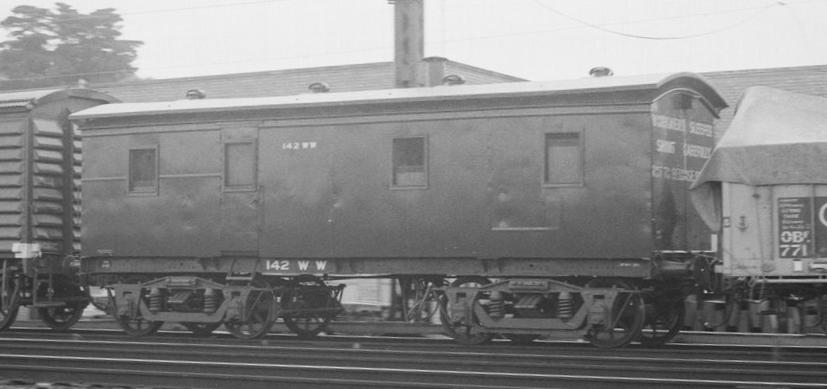

The WW code was first introduced in the 1910 recoding.
There were three bogie vehicles in the _WS_ group. These were recoded and renumbered to WW 1, 2, 3. They were scrapped in the 1930's.
The WW code re-appeared in the 1940's when surplus carriages were converted to workmen's sleeper use. Conversion involved putting bunks or beds into normal seating compartments.
The Victorian RAAF Recruiting Train was converted from cars converted to WW. The cars were painted blue and reverted to their old codes. When the Recruiting train ceased operation, the cars were recoded back to WW. These cars retained the RAAF blue scheme into the 1950's when they were repainted during lift maintenance.
There were a large number of _W__ four and six wheel workmen's sleeper vans that were not suitable for auto coupler conversion. To overcome the problem, underframes from scrapped bogie carriages were shortened, then fitted with autocouplers. The body of the four/six wheel vehicle was then lifted off and fitted to the modified bogie underframe. Initially these cars were to be part or the W group but prior to service they were lettered for WW and numbered from 101 upwards. A photograph of the first of these cars is shown in a VR Newsletter prior to service lettered as a W.
After the 1960's, surplus bogie carriages were converted to workmen's sleeping cars.
The WW class numbers were 1 - 99, 101 - 165, 170 - 176.
In later years a vehicle 'WW 441' could be photographed. This should have been 'WW 144'. What is curious about this is that fixed wheel sleeper 'W 441' could be photographed lettered as 'W 144'.